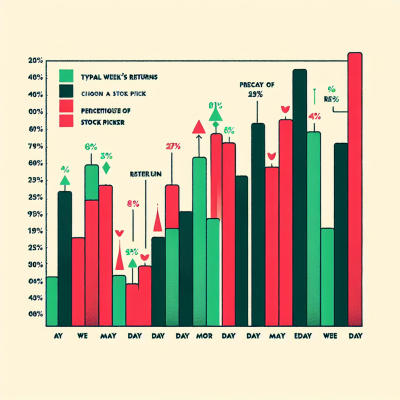
Understanding the Shift: A Return to a Stock Picker’s Market
Throughout much of the recent bull market, the broad rise in U.S. equities was largely carried by a handful of dominant mega-cap stocks — often referred to as the “Magnificent Seven.” But recent market behavior is signaling a transition. As the S&P 500 continues its strong performance, not every stock is tagging along for the ride.
Investors are now entering a new phase of market dynamics where selective investing is set to outperform passive exposure. Welcome back to the stock picker’s market — a landscape where fundamentals matter, and stock-specific catalysts can make all the difference.
The Decline of Market Breadth
Market breadth — a measure of how many stocks are moving in tandem — has narrowed significantly since late 2023. While the S&P 500 remains within striking distance of all-time highs, fewer and fewer individual companies are contributing to the index’s gains.
This divergence is especially apparent as macroeconomic themes, such as inflation data and Federal Reserve policy, increasingly affect different sectors in distinct ways. Some areas — like technology — have continued to thrive, while others, including cyclical businesses and certain defensive stocks, have lagged.
Sector Sensitivity to News and Data
As the Yahoo Finance chart suggests, the once-common synchronized movement of stocks off tariff headlines or economic data releases is dissipating. Instead, markets are parsing these developments on a company-by-company basis. For example:
- Rising tariffs on specific goods may hit manufacturing stocks harder than tech companies.
- Strong job reports might help consumer discretionary names but hurt interest-rate sensitive sectors.
- AI-driven demand may buoy a niche segment of chipmakers while leaving legacy hardware manufacturers behind.
This detachment of individual stock performance from broad indices opens up opportunities — and risks — for active investors.
Why This Matters for Investors
In a stock picker’s market, buying a market-cap-weighted index ETF might not deliver the same outsized returns investors have grown used to. Instead, successful investors will need to:
- Dive into fundamentals: Evaluate individual balance sheets, earning trends, and company outlooks.
- Identify leadership trends: Determine which companies are making sectoral advances and which are falling behind.
- Monitor macro signals: Consider how rate cuts, inflation expectations, and global economic developments will impact specific industries.
Institutional vs. Retail Behavior
One of the reasons for this shift is behavioral. As confidence in a soft landing grows and expectations of rate cuts increase, institutional investors are rotating out of index-heavy strategies and into more targeted plays. Higher dispersion — when the performance difference between best- and worst-performing stocks increases — rewards this approach.
Retail investors, meanwhile, may continue to chase familiar names or index funds, potentially missing out on the alpha generated by more active strategies. This divergence could widen performance gaps across portfolios.
What Signals a True Stock Picker’s Market?
Here are a few signs that the stock picker’s market is taking hold:
- Lower correlation among S&P 500 constituents: The statistical relationship between stock movements is declining.
- Rallying index despite weak internals: The index climbs higher, but fewer stocks are hitting new highs.
- Sector rotation: Outperformance shifts between sectors based on earnings surprises, geopolitical events, and changing economic outlooks.
These indicators suggest that investors willing to do their homework have an edge again.
Strategies for Navigating This Market
To succeed in this environment, consider these actionable strategies:
1. Focus on Earnings Revisions
Stocks tend to react most significantly to earnings surprises and guidance. Monitor revisions and consensus estimates as an early signal of momentum.
2. Embrace Relative Valuation
Compare companies within the same sector. There may be hidden bargains among overlooked performers.
3. Use Technicals for Confirmation
Range-bound markets often exhibit more false breakouts. Use charts and technical indicators to support your fundamental thesis.
4. Consider Active Management or ETFs
While passive investing remains a cornerstone strategy, sector-specific ETFs or actively-managed funds provide more nuance and exposure to emerging leaders.
Final Thoughts: The Importance of Selectivity
As the S&P 500 rallies, it no longer does so with the uniformity we saw in the past couple of years. The days of simply “buying the market” and watching gains accumulate across the board may be behind us — at least for now.
In a stock picker’s market, accuracy matters more than ever. The ability to differentiate between winners and losers can have a meaningful impact on portfolio performance. Whether you’re an institutional investor or a retail trader, the key to capitalizing on this market lies in depth of research, timely analysis, and the willingness to lean into conviction.
This is the time to roll up your sleeves, dig into company fundamentals, and think beyond the index. The opportunities are abundant — for those who know where to look.


Leave a Reply